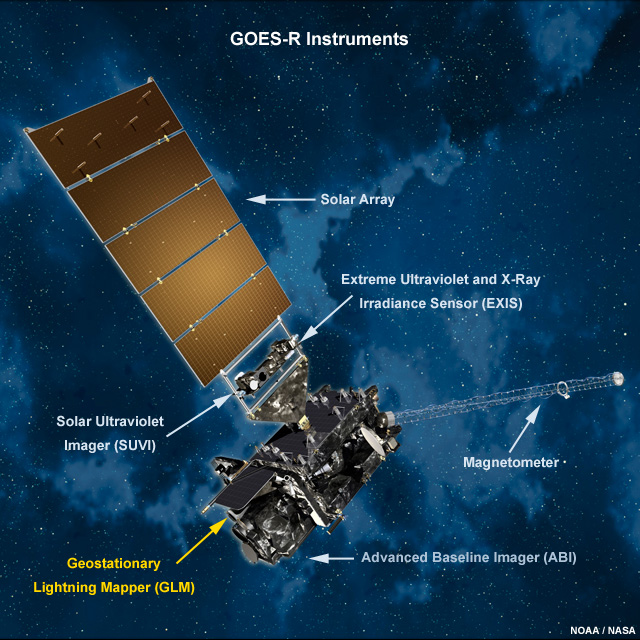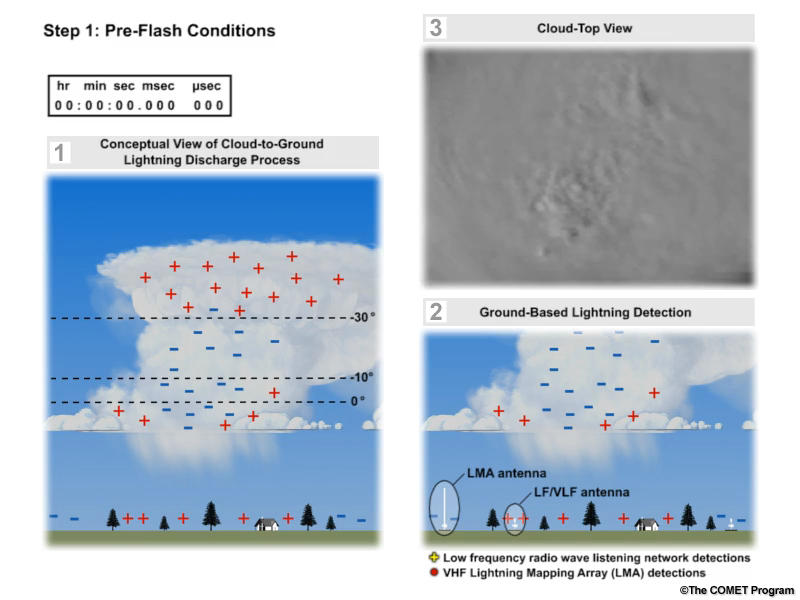About the GLM »
Introduction
This lesson describes the need for real-time lightning information and the capabilities of the Geostationary Lightning Mapper (GLM), which will fly on the next-generation GOES-R satellites as the first operational lightning detector in geostationary orbit.

An exploratory section lets users explore the life cycle of lightning, how it is observed by space- and ground-based detection systems, and how lightning flashes translate to GLM observations.

The final section highlights some of the many applications that will benefit from GLM observations.
By the end of the lesson, learners will be able to:
- Describe the GLM’s benefits and capabilities
- Differentiate between how lightning is observed by space-based and ground-based detection systems
- Describe the main components of the cloud-to-ground lightning flash life cycle
- Outline the process of converting GLM observations to a lightning flash product
- Describe how GLM observations will help improve situational awareness and severe weather warning decision support
- Explain how GLM observations will improve warnings of impending lightning hazards
- Describe how GLM observations will benefit other application areas, including aviation, quantitative precipitation estimation, atmospheric chemistry, tropical cyclones, fires, numerical weather prediction, and climate and global studies